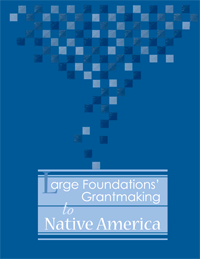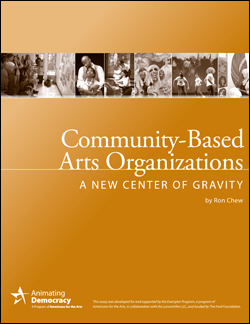Cultural Policy
First Nations Development Institute and Native Americans in Philanthropy convened a group of Native philanthropic leaders in Minneapolis/St. Paul on September 14 2005, to discuss how we can better support the development of Native foundations and Native philanthropy. The objective of this meeting was to provide insight and input into the design and implementation of a structure to support the further development of Native foundations and Native philanthropy through technical assistance, advocacy and research.
Read More...A Native critique of American life, featuring the best of Indian Country Today's editorials and perspectives since 2000. Contemporary Native thinkers and writers meet the dominant issues in both Indian and non-Indian public life head-on in this unique publication. The book is a must-read for anyone who needs a contemporary view of the major issues affecting tribal communities across the country.
Available from Indian Country Today.
Read More...
This report presents key findings from a study of large foundations' giving to Native American causes and concerns. It addresses the real dollar value of grantmaking from 1989-2002, top donors and top recipients, and the general purposes to which grants are targeted. The pamphlet concludes with a discussion of what the data imply (and in particular, what action they ought to motivate) for foundations, Native-serving nonprofits, and tribal governments.
Read More...The story of how the Boston Foundation became the first community foundation to develop and implement policy on exercising its proxy votes on investments to advance its mission.
Posted courtesy of Stanford Social Innovation Review
Download:
![]() What Works (5.9Mb)
What Works (5.9Mb)
2009, Americans for the Arts, 21 pages. Americans for the Arts, 1000 Vermont Avenue NW, 6th Floor, Washington, D.C., 20005, (202) 371-2830, www.artsusa.org.
Download:
Read More...As a program officer at The San Francisco Foundation, I say “No” to artists and arts organizations daily. I try to soften the blow, detailing the reality of limited resources and an overabundance of projects, seldom discussing quality or appropriateness, thinking I am kinder in vagueness.
Read More...In the past two years, several prominent foundations at national, regional, and local levels have appointed new presidents. Such leadership transitions are likely to increase in the years ahead in keeping with the larger generational shift in the nonprofit sector. Very few of the new foundation leaders are likely to come from the arts sector, and many will have had little direct experience with our field.
Read More...
